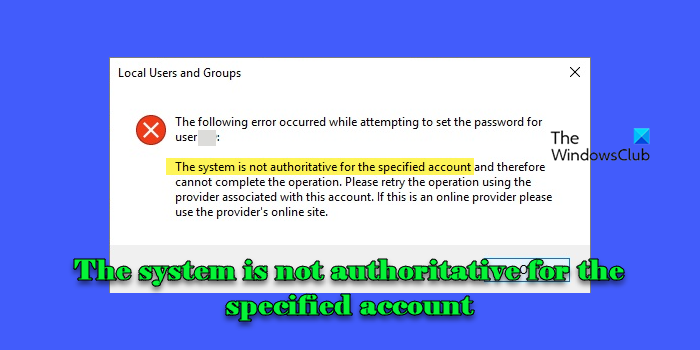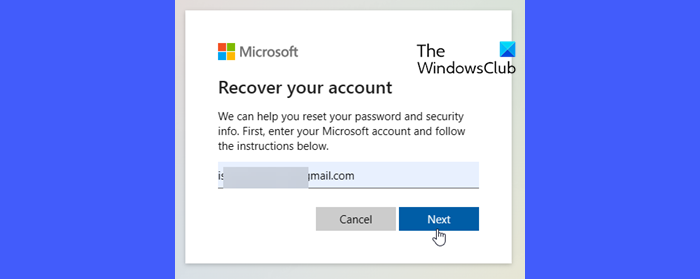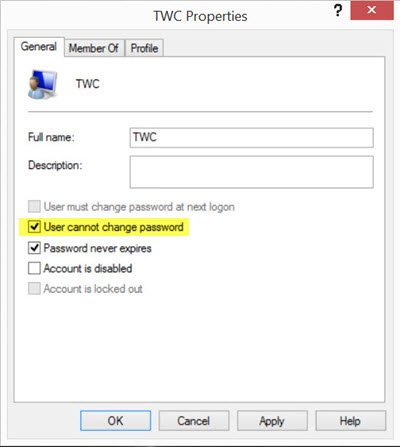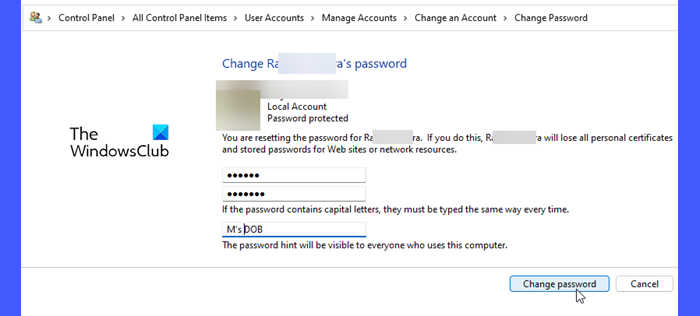If you encounter the error message ‘The system is not authoritative for the specified account and therefore cannot complete the operation‘ on your Windows 11/10 PC, read this post. We will show you what steps to take to troubleshoot the issue in various situations where the error may occur.

Also known as System Error 8646, the error is often encountered by Windows users while attempting to log in to their PC using a Microsoft or a local account, or by system administrators while trying to reset the account password for their domain users. The complete error message reads:
The system is not authoritative for the specified account and therefore cannot complete the operation. Please retry the operation using the provider associated with this account. If this is an online provider please use the provider’s online site.
If the above error is causing you trouble, continue reading to learn how to get rid of it.
The system is not authoritative for the specified account and therefore cannot complete the operation
To fix the error message ‘The system is not authoritative for the specified account and therefore cannot complete the operation‘ on a Windows 11/10 computer, use these solutions:
- Reset your Microsoft account password online or create a new user account
- Log in using a local account instead of the Microsoft account
- Uncheck ‘Users cannot change password’ in Local Users and Groups
- Change the password from the Control Panel
- Enable the built-in Administrator account to change password
Let us see this in detail.
1] Reset the Microsoft account password online or create a new user account

The error often occurs while dealing with Microsoft accounts (those linked to email addresses) rather than local accounts.
If you’re trying to change the password for a Microsoft account using the Computer Management tool while you’re logged in to Windows with your local account, you won’t be able to do that. This is because a Microsoft account cannot be modified or manipulated using a local account.
To fix this, you need to visit Microsoft online to reset the account password.
However, if you’re an administrator trying to reset the account password for a domain user who no longer remembers any piece of information to verify his account identity, you need to create a new local account for that user. This is because an administrator account in Windows does not have the authority to override the password of a Microsoft account.
After creating the new account, you may use administrative privileges to move user data from the old profile folder to the new profile folder.
2] Log in using a local account instead of the Microsoft account

If you’re trying to set a password for a Microsoft account that has been configured with a PIN during setup, try disabling the ‘For improved security, only Allow Windows Hello sign-in for Microsoft accounts on this device‘ option in Windows Settings (Navigate to Accounts > Sign-in options in the Settings window). You will see the option to set up or change your password.
If you’re still not able to change the password, switch to a Local Account.
3] Uncheck ‘Users cannot change password’ in Local Users and Groups

If you’re using a local account (not linked to an email), you might still encounter this error. In that case, follow these steps to fix the issue:
- Right-click This PC and select Manage.
- In the Computer Management window, navigate to Local Users and Groups > Users.
- Locate the user name, right-click, and select Properties.
- Uncheck User cannot change password.
- Click Apply, then OK.
You should now be able to change the password.
4] Change the password from the Control Panel

If you’re logged in with a local account that has administrative rights and still not able to change the user account password (for another local account on your system), follow these steps:
- Search for ‘Control Panel’ in the Windows Search bar and open the app.
- Click on User Accounts.
- Select Manage another account.
- Select the account for which you want to reset the password.
- Click Change the password.
- Enter the required password details and click Change password.
5] Enable the built-in Administrator account to change password

If you encounter the error after upgrading your Windows OS, boot your PC in Safe Mode with Networking and check if you’re able to log in using your Microsoft account.
At the login screen, hold the Shift key and restart your PC. The system will enter the Windows Recovery Environment (WinRE). In WinRe, navigate to Troubleshoot > Advanced options > Startup settings > Restart > Press 5 or F5 to enter Safe Mode with Networking.
If you can log in, create a new administrator account and use it to change the password for the other account.
If you’re not able to log in with your Microsoft account in Safe Mode, we suggest enabling the built-in administrator account to change the password. The account is deactivated by default in Windows as a security measure to help protect the system from unauthorized access and potential security vulnerabilities.
In WinRe, navigate to Troubleshoot > Advanced options > Command Prompt. Run the following command in the command prompt window:
net user Administrator /active:yes
Now reboot your PC, log in to the built-in admin account, and try to reset the password for the other account.
Once you reset the password, run the following command in an elevated Command Prompt to deactivate the built-in admin account:
net user Administrator /active:no
I hope the above solutions help you get rid of the ‘The system is not authoritative for the specified account’ error.
Read: An error occurred while trying to configure this machine as a Domain Controller.
How to fix System Error 8646?
If you encounter system error 8646 in Windows 11/10 while attempting to reset the password of a Microsoft account using the net user command, try changing the password using the Windows Settings app, from the Control Panel, or by visiting the Microsoft account online. If the error persists, boot your PC into Safe Mode and run SFC and DISM commands within an elevated Command Prompt to repair corrupt user account data.
Why should a standard account be used when administrator privileges are not required?
Using a standard account instead of an administrator account when elevated privileges are not required reduces the risk of accidental or intentional changes and the potential impact of malware that could compromise system security. Additionally, standard accounts help in better management and control, especially in multi-user environments where it is important to ensure that only trusted users can make system-wide changes.
Read Next: Group Policy not replicating between Domain Controllers.
Leave a Reply